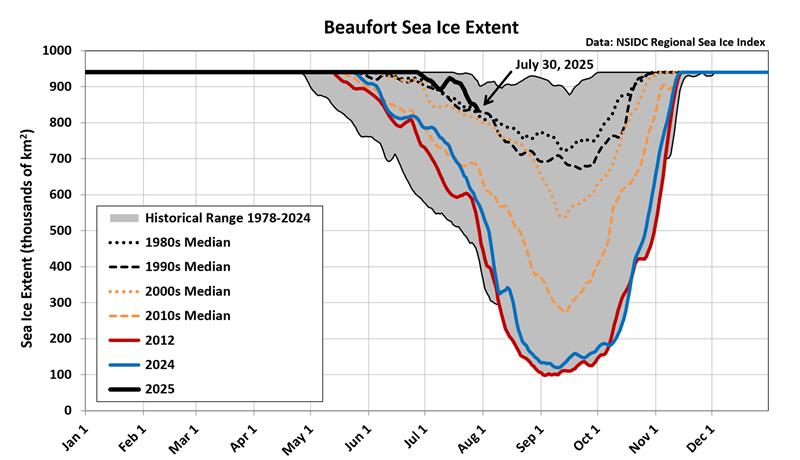All Activity
- Past hour
-
Talk about a hot Euro run. Heat wave next week, but it's even hotter in the long range for the week of the 11th. We're getting a nice break here in early August, but mid August is probably going to be the worst part of this summer. We had those extremely intense heat waves in late June and late July, but they only lasted a few days. The heat in mid August is going to be much longer lasting.
-
The rivers are low!
-
I'm wondering if it can get hot underneath the telecon suggestion. That's a bad bad sign for the CC deniers ha
-

INVEST 96L IS HERE (THE NEW AFRICAN WAVE)
BarryStantonGBP replied to BarryStantonGBP's topic in Tropical Headquarters
Invest 96LAs of 18:00 UTC Aug 06, 2025: Location: 11.7°N 33.1°WMaximum Winds: 30 kt Gusts: N/AMinimum Central Pressure: 1011 mbEnvironmental Pressure: N/ARadius of Circulation: N/ARadius of Maximum wind: 80 nm -
LMAO AL, 96, 2025080618, , BEST, 0, 117N, 331W, 30, 1011, DB, 34, NEQ, 0, 0, 0, 0, 1014, 150, 80, 0, 0, L, 0, , 0, 0, INVEST, S, 0, , 0, 0, 0, 0, genesis-num, 013, SPAWNINVEST, al732025 to al962025, OUI OUI BAGUETTE
-
Woof...that euro run. Hot hot hot.
-
That's absolutely amazing for so long ago, Tony! And wasn't the following winter, *The Long Winter*? The Weather Channel had a climatologist on who analyzed the Little House on the Prairie books and said they were based on real weather events and one of them was The Long Winter, which is based on the winter of 1881-82?
-
Wait, who said "dismantled" ?
-

2025-2026 ENSO
Winter Wizard replied to 40/70 Benchmark's topic in Weather Forecasting and Discussion
Came across this which I found somewhat interesting...Arctic sea ice is currently matching 2012's pace for record low but in the Beaufort Sea (Alaska) it's actually well above the 2000s and 2010s median. Not sure what, if anything, that means for Winter but may be worth keeping an eye on. -
I mean what is getting rid of 566 out of ~4000 but dismantling? It's been a miserable stretch since February, and I haven't even had it as bad as some other offices. Thankfully tremendous public support and pressure from Congress has granted us that public safety exemption and the ability to hire back 450 positions. However that is going to come with pretty radical changes to the structure of the NWS as well. What those will be is above my pay grade, but there is more coming (not all bad necessarily). My general feel for this is that NWS knew budgets weren't ever going to get appreciably bigger. They created a plan to reorganize the operations model. The election happened and DOGE came in with a sledgehammer and forced the NWS to pause reorganization because they lacked the staff to do it the way they had planned. Now based on briefing the right people we have the okay to move forward with reorganization as long as we can get staffing back up. I don't have hard evidence of that, but I have enough pieces of information to put that together.
-
Canning 600 and then hiring 450. What great business. TACO Trump caves again.
-
I think that's in the plausible reason group. Sox started winning more so when Roman came up and pitching improved. The trade predated by a bit more than that - but yeah it's plausibly related. Dynamics and such. It's tougher one because they were in the midst of a 5 or 6 game W streak, but then went into a slump where they were 4 and 11 shortly after he left. That gave the allusion ( at least ...) that it hurt the clubhouse and soldiering. Roman came up from the minors ...June 11 I think... so it kind of goes both way. I just see the biggest wins streaks of the season happening since (Roman came up and pitching improving)/2 ...but if we wanna include Devers, whom I was starting to not like anyway Ha...sure. They're all doing better in hitting for that matter.
-
For the 1881 Michigan fires which appear the main / largest fires were in Sep 4 - 7th https://medium.com/life-fun-in-michigans-thumb/1881-michigan-fire-forever-changed-the-thumb-e60ae1e9d84e “In September no penetrating rain had fallen for almost two months. Almost every stream was dry. Many wells had become empty. The swamps had been burned to hard clay by the sun, fiercer in its heat than it had been for years before. The vegetation of the fields and woods had become tinder. The earth was baked and cracked, the heat having penetrated to an unusual depth. “The summer of 1881 was excessively dry, and the drought had done its work nowhere more effectively than in the wide, blunt, tongue of land which lies between Saginaw bay and Lake Huron. At the northern end of this tongue is Huron County. South of Huron is the counties of Tuscola and Sanilac, the latter bordering on the lake. Lapeer County lies south partly of Tuscola and partly of Sanilac. These are the counties that suffered from the great fires.” When the fire finally burned itself out, there were 282 known dead, more than 3,400 buildings destroyed, and almost 15,000 residents homeless. Many were blinded — some temporarily and some permanently — by smoke, gusting dust, and flying ashes that traveled faster than a whirlwind and blotted out the sun for days. The disaster changes the landscape of Michigan’s Thumb region forever and jump-started the move from lumbering to agriculture. “In Boston and along the eastern seaboard a mysterious “yellow sky” appeared. The skies darkened shortly after dawn on Tuesday, September 6, 1881 — throughout all six New England states. In the “forenoon,” as they called their mornings then, witnesses watched a “London fog” envelop their homes and roads. This London fog soon took on a yellowish hue. More than a few whispered that the “Saffron Curtain” was the sign of a divine judgement. The causes behind the odd skies of that September day were eventually traced to smoke that had traveled eastward from Michigan’s massive “Thumb Fire” that had burnt over a million acres of woodlands in Michigan’s Thumb Area all on one day, the day before.” In 1881 Clara Barton founded the American Red Cross. The organization’s first meeting had taken place in Washington DC at the home of Sen. Omar D. Conger of Michigan. Their first official disaster relief operation was the response to the Thumb Fire, and the Red Cross provided money, clothes, and household items to victims of the fire. How many people died in the 1881 Michigan Fire? The stated death toll for the 1881 fire is stated as 282. However, the real total will never be known as there were many lumbermen and transient laborers in the region. How many acres were destroyed in the 1881 Michigan Fire? Over two days over a million acres were burned. It left 3,400 buildings destroyed, and almost 15,000 residents homeless. What was the economic loss of the 1881 Michigan Fire? The U.S. Army offered an estimate of $2,003,390. In today’s dollars that equates to over $50,000,000. How Does the 1881 Michigan Fire Compare to Other Wildfires in History? In terms of loss of life, the 1881 Great Michigan Fire is considered one of the top ten wildfires of all time. With 282 lives lost the 1881 wildfire is considered the 6th worst in history.
-
Three was a lot of talking about the dismantling of NWS. So much disinformation NEW: The NWS receives permission to hire up to 450 meteorologists/hydrologists/radar technicians after DOGE-related cuts. Agency also given a public safety exemption from federal hiring freeze.
-
Hopefully the Red Sox go deep into October...would eliminate having to deal with one month of hockey. But not that I have alot (or any) expertise in this, but I'm shocked CSU maintained their above average hurricane forecast with today's update. It's slightly down from April but maintained from the June update. They must be going for a big peak/back half.
-
I have been sucked-in by La Nada before which is what the SSTs kind of look like. La Nada often looks great at the start, but lots and lots of swings and misses. That said, I have a hard time seeing lots of. misses w/ the Dec-Jan setup as depicted on this month's seasonal Euro. That is about as good as it gets. The fly in the ointment would be cold source and a ridge bellying underneath across the South. The Great Lakes region looks primed for cold. Can it get south of the Ohio River? We will see. I do agree the QBO should be good for this winter - such an odd metric to be so accurate. Honestly, it is a weak Nina in the eastern Pac and a weak Nino in the western Pac -> maybe that is the ticket which is the best of both worlds. That warmer western Pac might be enough to get convection into phase 8-1 during mid winter. It may well be that we see the NAO fire again as recent winters have seen it much more active in a good way. John might have better information about Nada's w his personal records in conjunction w/ the QBO. His data set is the only data set I truly trust for this region.

.thumb.png.4150b06c63a21f61052e47a612bf1818.png)













